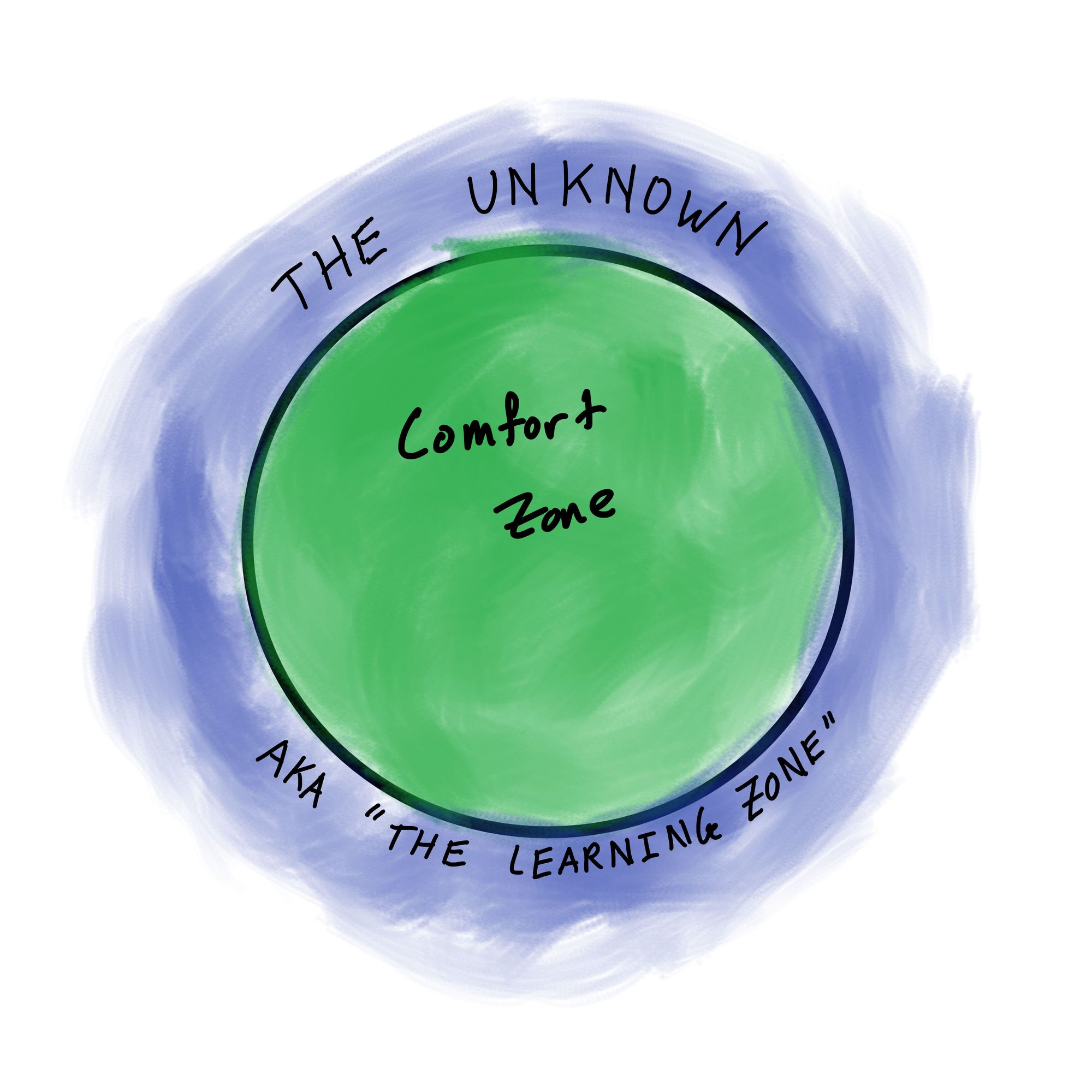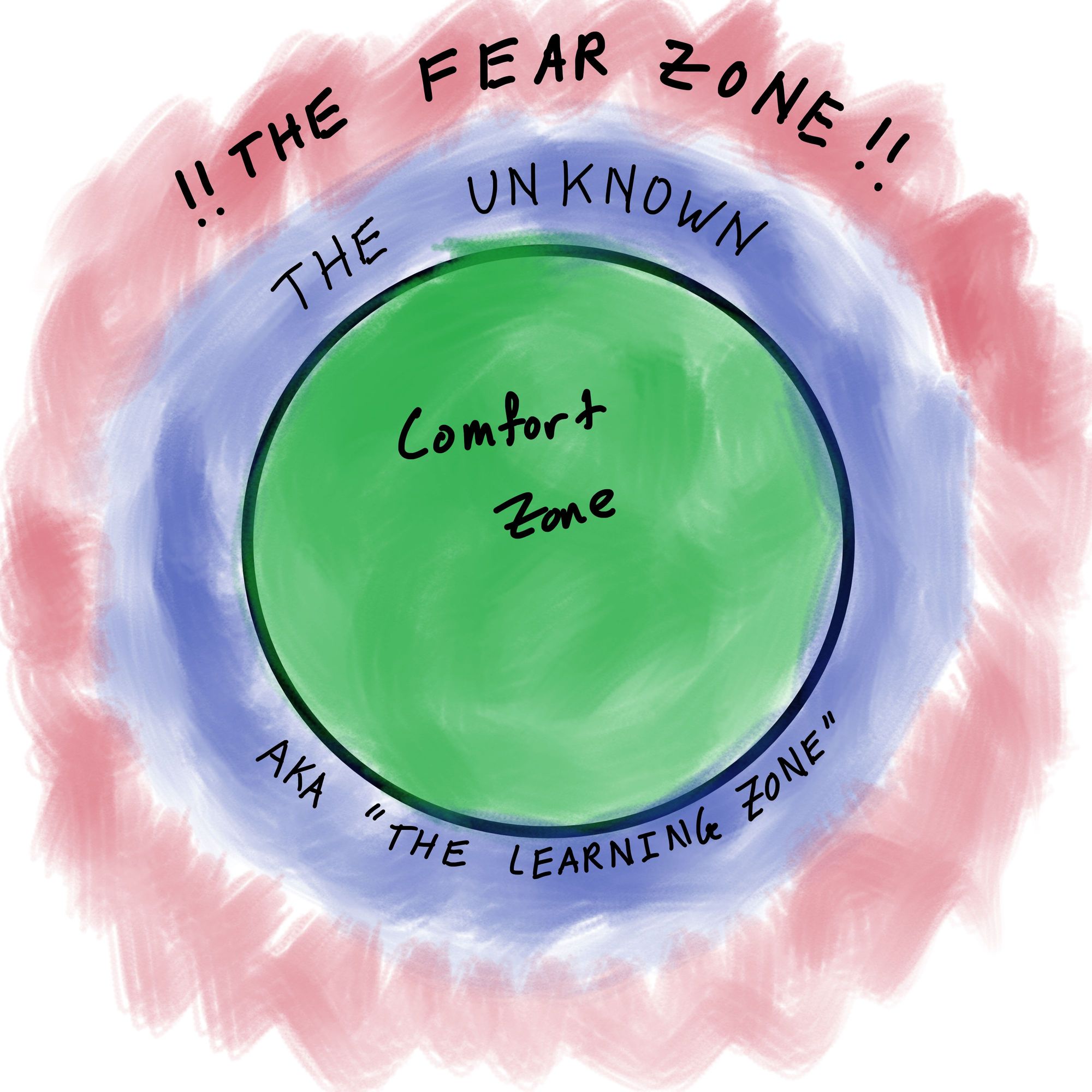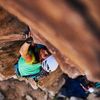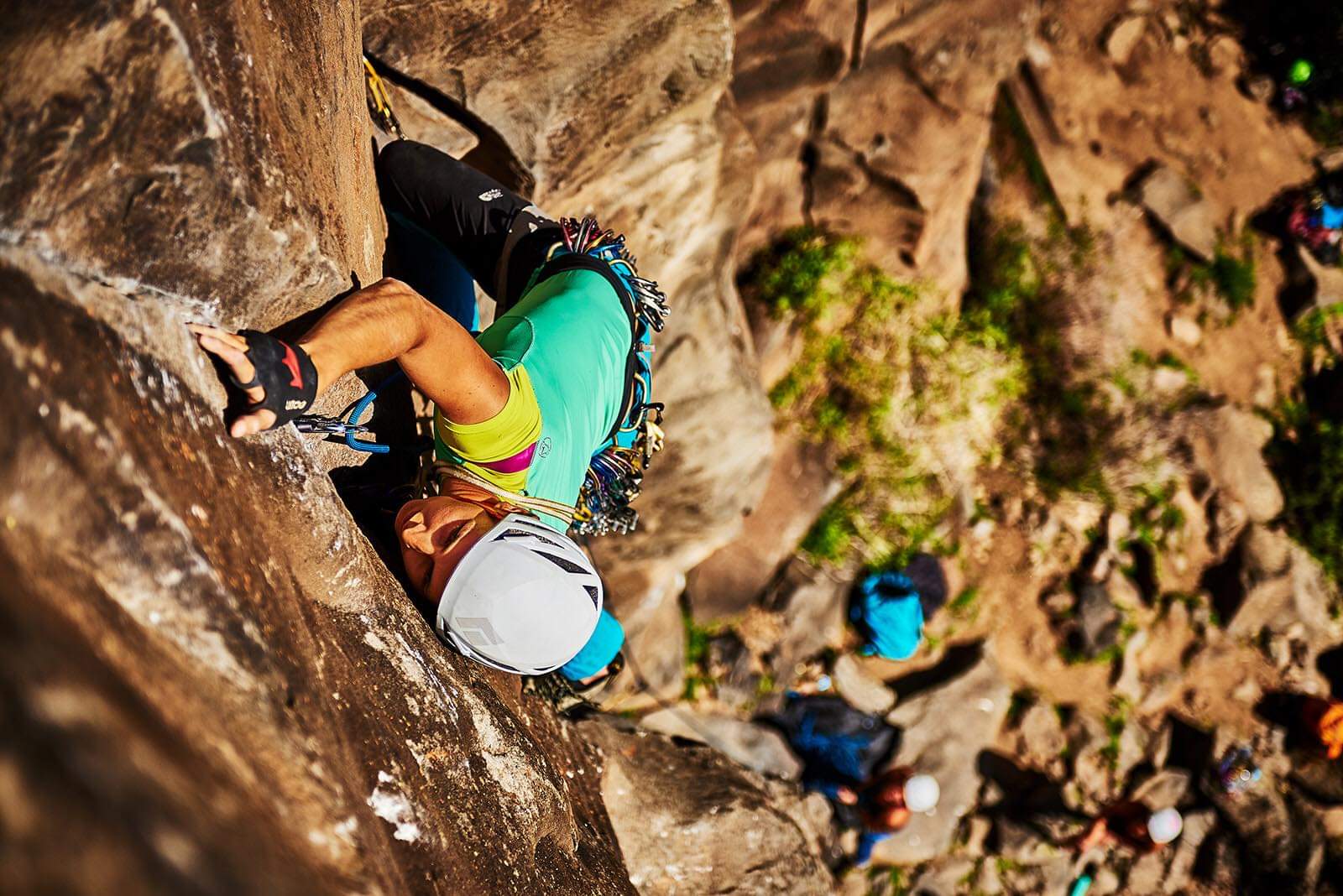Me on the first 5.10b climb I’ve ever sent. (Sent is to climb a climb without falling). One of the high moments of my life where I felt I acted as a warrior. 📸 by Clinton Leung
When talking to my friends and colleagues, I’m often asked to define what I mean by warriorship. Often, they think I’m talking about rock climbing training. They think warrioriship is rooted in physical strength. However, you can be physically strong and still not be practicing warriorship. Warriorship is a mental practice, not a physical one. We can frame warriorship as engaging with the unknowns in life with impeccability. We often think of warriorship in the sense of war because soldiers would benefit from practicing warriorship. If a soldier approaches the battle field, which is always unknown, with poise and expertise, and if they act impeccably, they increase their chance of survival. These concepts require some unpacking. We have to define the concept of the unknowns as it relates to the challenges we face in our lives and we must explore what it means to act impeccably and how to act impeccably when we venture into the unknown.
The unknown is anything that is outside of what we consider our daily lives, anything that is uncomfortable. If you conjure up the feeling of learning something new, like riding a bike you know the feeling of the unknown becomes familiar. When you first get on the wild metal contraption it takes all your focus to keep from falling over or crashing into things. This can bring up feelings of fear and uncertainty as it’s unfamiliar--unknown--to you. When I mention that I climb outside to non-climbers they always say “oh you must be so brave, I could never do that.” The truth is, I once thought the same. I thought climbing was “too extreme”. Once I realized that I wanted to climb, and I wanted to get good at it, I started to make plans to venture into the unknown to learn how to rock climb. I did this by slowly exposing myself to situations that were uncomfortable but not completely terrifying. My process for expanding my comfort zone follows this formula:
1. Understand your comfort zone
2. Define the fears and discomforts outside your comfort zone
3. Make a plan to push on one of those fears or discomforts with a small step outside your comfort zone
4. Commit to the plan and execute
5. Reflect on the effects of pushing those boundaries
6. Repeat
Okay so maybe there were a few moments where I found myself pretty terrified.
If you think of your comfort zones as a set of concentric rings, the innermost ring is the known, this is your comfort zone.

Let's continue with the learning to ride a bike scenario. When you start learning, you probably try to use something like training wheels, getting on the tall metal frame with it's large wheels and it's slightly unbalanced nature feels uncomfortable but not completely dangerous, this is the area of the unknown, or as I fondly call it the "learning" zone. It's good to push into this zone because this is where we discover new things about ourselves and can expand this comfort zone. When venturing into the unknown, we often have to accidentally go past the learning zone into the "fear" zone to discover the boundaries of the "learning" zone. You can imagine the feeling of fear when you first go down a steep hill even with training wheels, or even being out of control. If you find yourself feeling completely out of control you've pushed too far. The sweet spot, the learning zone, can be hard to find.

A few things will be obvious to you if you're in the "fear" zone. You will be afraid -- not nervous -- you will feel like you can't handle it and you're in way over your head. Sometimes, it may even feel as if you just desperately need to get out of the situation that you're in. This is a dangerous spot. This is often what happens when people are "thrown into the deep end". It's actually a terrible way to learn because you are no longer able to observe what is going on while you're trying something outside your comfort zone. Your brain is in survival mode and will just be happy to have made it through it.
While I was learning to climb, I was lucky enough to be able to learn outside on top rope with an experienced climber to guide me. Having a guide or coach is often a great way of creating your training wheels to get into the learning zone. However, being in the “learning zone” isn’t enough.
Climbing "Center of The Universe", a climb well above my ability but I'm on top rope, so I'm still within the "Learning Zone".
The second part of expanding your comfort zone is to enter into the unknown with impeccability. Impeccability is explored extensively in warriorship literature (links included at the end of the post). The first simple step to move towards impeccability is to set your intentions for going into the learning zone. The second part is defining your fears and taking account of the real risks. This requires absolute honesty with yourself about your abilities and realities. This can be a huge hurdle, but it’s crucial. It’s important though to only focus on one thing each time you go into the “learning zone”, otherwise you will not be able to commit entirely to the experience and you will not be able to act impeccably. You’ll be stuck in your head trying to juggle your attention between each area of focus. Keep a high level of awareness of your actions and the results. This will allow you to repeat and test new things out in your area of focus. For instance, it’s often wise to tell a new climber to focus on their footwork while they are climbing and give them no other advice. Sure, there’s more that they could improve on, but it’s important that they focus on one thing while they’re venturing out of their comfort zone--flat land-- to a learning zone--a vertical wall with a top rope for safety.
Then the last part--the fun part--is to actually engage with the unknown. Get on the wall and focus on the intention you set for your session. Now is the time for action and not thought. For instance if you're focused on your foot work, try your best to ignore the fear of falling, let it go and feel it and don't let it linger, bring your attention back to your feet. It is also powerful to pair this with mindfulness practice, as it gives you a way to hone these skills while not in the arena of the unknown. The combination bringing focus on your intention is where the ability to act impeccably lies.
Once your session of engaging with the unknown is done, debrief with yourself. What went well? What went poorly? What can you try different the next time you engage with the unknown? You can see how these questions and this pattern of learning and self improvement can apply to other areas of life. Work, life, relationships: these are all places we want to improve, and all places in which we must engage with the unknown. So I encourage you to go and be a warrior, and engage with life impeccably.
I plan to write more on warriorship as I continue engaging with my fears both in climbing, and in my work.
A special thanks to Duretti for being a great writing coach and an even more amazing friend. 💜
Warriorship Literature
A great digest of the warriorship literature can be found in The Craft of The Warrior by Robert L Spencer
Another great intro to warriorship teachings in long story form can be had in both audiobook and text via The Way of the Peaceful Warrior by Dan Millman.

